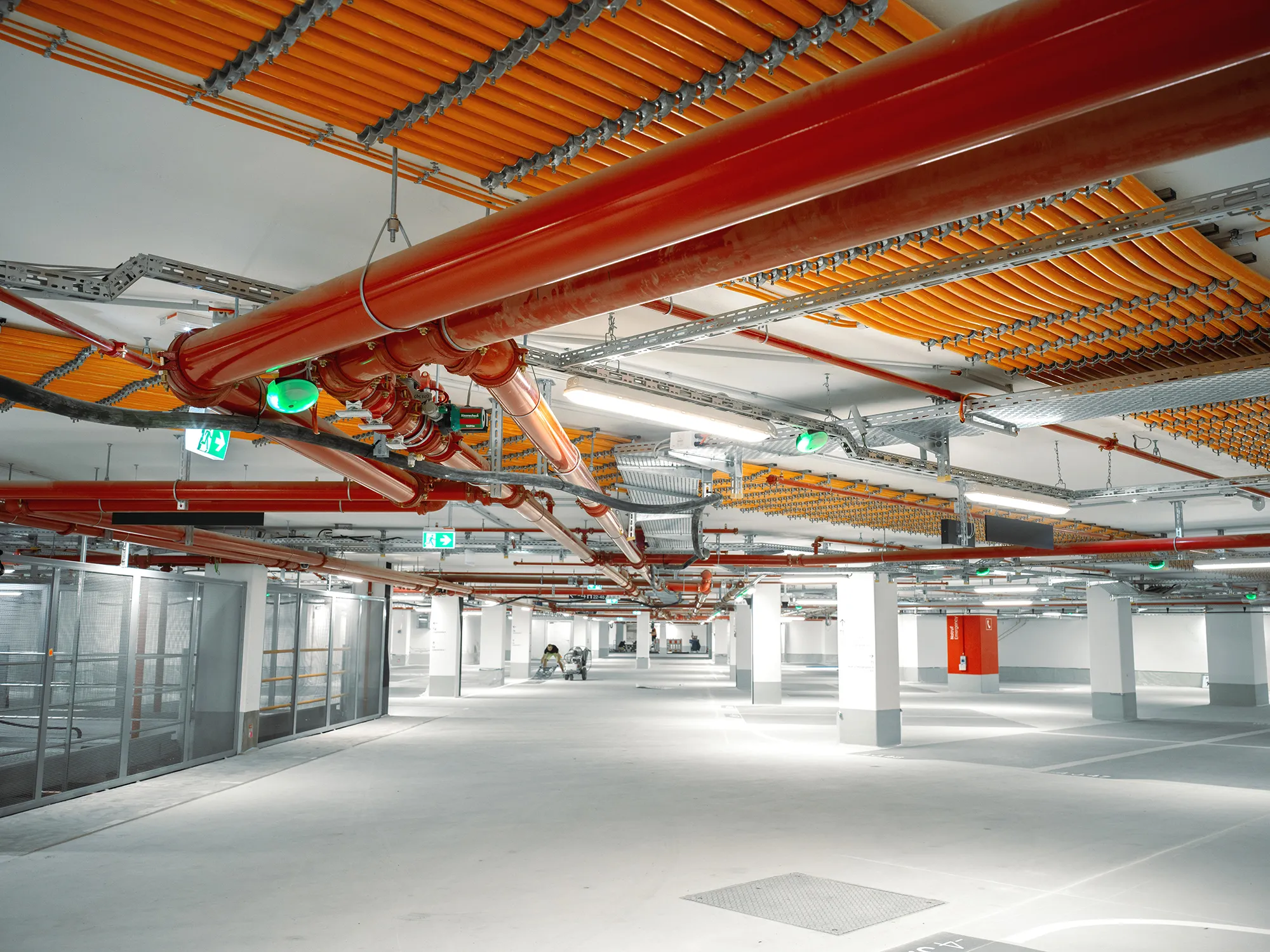Energy
Power Engineering
Heat recovery
Cooling recovery
Building infrastructure
Campus infrastructure
Geothermal energy
Solar thermal energy
Photovoltaics
Cogeneration
Blockheizkraftwerke
Water
Rainwater
Sewage
Percolation systems
Storage
Storm-water utilization
Grey-water utilization
Grease separator systems
Wet waste disposal system
Water supply
Pressure control
Pressure increase
Water treatment
Wastewater neutralization
Gas supply
Compressed air supply
Heating
High temperature heating systems
Low temperature heating systems
Thermal storage
Heat recovery
Space heating technology
Distribution networks
Cooling
Refrigerating plants
Thermal storage
Space cooling technology
Process cooling
Recooling systems
Verteilungen
Ventilation
Ventilation conditioning
Air conditioning
Process cooling
Filter technology
Exhaust technology
High-rise stair and elevator pressurisation
Kitchen ventilation
Extinguishing Systems
Fire hydrants
Sprinkler systems
Gas extinguishing systems
Inerting systems
Electrical Engineering
High voltage
Medium voltage
Solaranlagen
Supply concepts
Distribution networks
Smart grids
Electrical installation
Lightning protection
Grounding systems
EMC
Standby power supply
Emergency power
Storage systems
Day lighting
Artificial lighting
Communication Systems
Fire detection systems
Intrusion alarm systems
Alarm systems
Intercom systems
Bell systems
Access control
Media systems
Conference systems
TV systems
CCTV systems
Antenna systems
Voice alarming systems
Speaker systems
Data networks
Wireless communication (GSM, Wi-Fi)
Automation
Plant automation
Room automation
Safety managemnt
Fire management
Metering concepts
Monitoring concepts
Smart and AI systems
Technical Expansion
Technical interior fitting
Integrated installation systems
Steel construction
Locksmith services
Shaft structures
Steel support systems
Module planning
Prefabrication




















